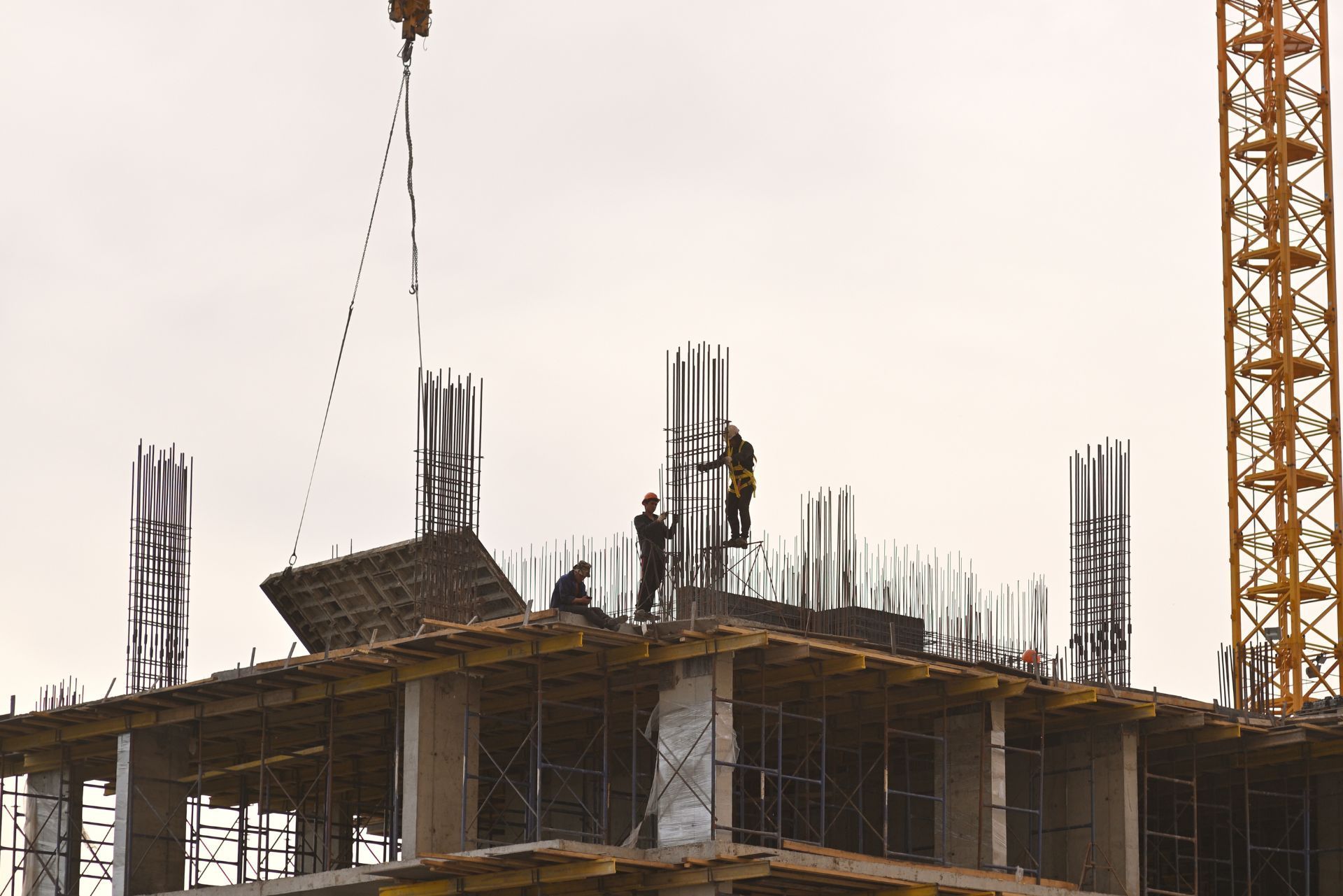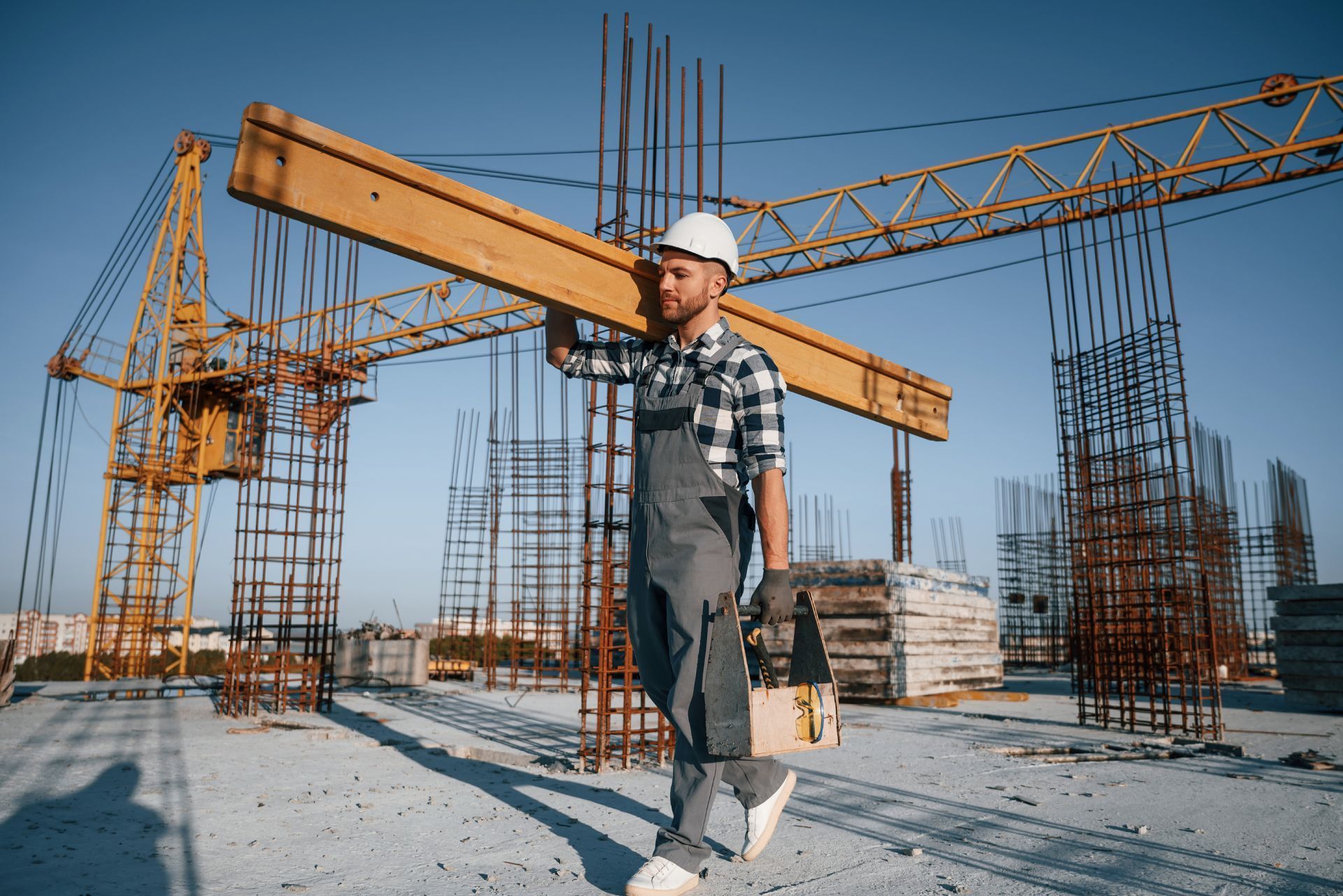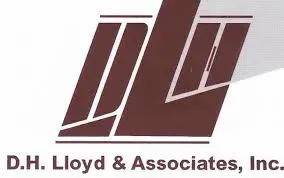Top 3 Recommended Business Policies
Index
Understanding Construction Bonds in Maryland
The Rising Cost of Insurance and Its Impact on Construction
Key Insurance Developments Affecting Maryland Construction
Choosing the Right Surety Bonds for Maryland Contractors
Expert Support and Resources for Construction Claims
Conclusion: Navigating Maryland’s Construction Bond Insurance Landscape
Contact Us
Maryland’s construction industry is a dynamic and vital part of the state’s economy, with projects ranging from residential developments to major infrastructure undertakings. Amid the increasing complexities of construction projects, securing the right insurance and bonding solutions is essential for contractors, subcontractors, and project owners alike. Construction bond insurance in Maryland plays a critical role in ensuring project completion, compliance, and financial security.
As the state faces rising insurance costs and climate-related risks, understanding the nuances of construction bonds and insurance coverage is more important than ever. This article explores the landscape of Maryland construction bond insurance, highlighting key trends, challenges, and resources to help stakeholders navigate this evolving environment.
Understanding Construction Bonds in Maryland
Construction bonds are a form of surety bond that provide financial guarantees to project owners that contractors will fulfill their contractual obligations. These bonds protect against risks such as contractor default, failure to pay subcontractors or suppliers, and incomplete work. In Maryland, construction bonds are often required for public projects and are highly recommended for private developments to mitigate risk.
There are several types of construction bonds commonly used in Maryland:
- Bid Bonds: Guarantee that a contractor will enter into a contract if awarded the project.
- Performance Bonds: Ensure that the contractor completes the project according to the contract terms.
- Payment Bonds: Protect subcontractors and suppliers by guaranteeing payment for labor and materials.
Contractors seeking these bonds can work with licensed surety bonding agencies authorized by the Maryland Home Improvement Commission. These agencies provide the necessary financial backing and expertise to secure bonds tailored to each project’s scope and risk profile.
In addition to the types of bonds mentioned, Maryland also recognizes the importance of maintenance bonds, which ensure that the contractor will address any defects in workmanship or materials for a specified period after project completion. This type of bond serves as an added layer of security for project owners, ensuring that any issues that arise post-construction will be rectified without additional costs. Furthermore, the bonding process itself often requires contractors to demonstrate their financial stability and experience, which can help project owners feel more confident in their choice of contractor.
Understanding the nuances of construction bonds is crucial for both contractors and project owners. The bond not only serves as a financial safety net but also fosters a sense of accountability and professionalism within the construction industry. With the right bonds in place, both parties can focus on the successful execution of the project, knowing that there are safeguards against potential pitfalls. As the construction landscape in Maryland continues to evolve, staying informed about bonding requirements and options will be essential for anyone involved in the industry.

The Rising Cost of Insurance and Its Impact on Construction
Maryland homeowners and construction professionals alike have felt the impact of rising insurance premiums in recent years. From 2021 to 2024, homeowners insurance premiums in Maryland increased by 25%, translating to an average additional cost of $648 annually for a typical $350,000 home. This trend is reflective of a broader national increase, with a 2025 report from the Consumer Federation of America noting a 24% average rise across the United States during the same period.
These escalating costs are not limited to homeowners insurance but extend into the commercial and construction insurance markets. The increasing frequency and severity of extreme weather events, as highlighted by Clifford Rossi, a risk management expert at the University of Maryland, are overwhelming insurers and contributing to market instability. Rossi testified that these climate-driven challenges are causing insurance companies to reconsider their risk exposure, sometimes leading to market failures and reduced coverage availability.
For construction firms in Maryland, these factors translate into higher premiums for liability insurance, builder’s risk policies, and surety bonds. The increased financial burden can affect project budgets and timelines, making it crucial for contractors to carefully evaluate their insurance needs and bond requirements. In addition, the rising costs can lead to a ripple effect throughout the construction industry, where subcontractors may also face increased premiums, ultimately driving up the overall cost of construction projects. This situation forces contractors to either absorb the additional costs, which can squeeze profit margins, or pass them on to clients, potentially leading to higher prices for consumers.
Moreover, the implications of these rising insurance costs extend beyond financial metrics; they can also impact the availability of skilled labor in the construction sector. As insurance premiums climb, some smaller construction firms may struggle to maintain competitive pricing, leading to reduced job opportunities and a potential exodus of skilled workers seeking more stable employment in other industries. This labor market shift can create a bottleneck in construction projects, delaying timelines and exacerbating the already strained housing market. As such, both homeowners and construction professionals must navigate this complex landscape, balancing the need for adequate coverage with the financial realities of an evolving insurance market.
Key Insurance Developments Affecting Maryland Construction
Recent high-profile incidents have brought attention to the importance of robust insurance coverage for infrastructure projects in Maryland. In May 2024, the state received a substantial $350 million insurance payout from Chubb following the collapse of the Francis Scott Key Bridge. This payment covered a portion of the damages and underscored the critical role insurance plays in mitigating financial losses from unexpected structural failures.
Such developments emphasize the necessity for contractors and project owners to secure comprehensive insurance and bonding solutions that can address not only routine risks but also catastrophic events. The ability to recover from such incidents without devastating financial consequences is vital for maintaining public trust and ensuring ongoing investment in Maryland’s infrastructure.
Contractors and developers should stay informed about these market shifts and work with experienced insurance providers who understand the unique risks faced by Maryland’s construction sector. Additionally, the evolving landscape of insurance regulations and requirements in Maryland necessitates that stakeholders remain vigilant and proactive. For instance, the Maryland Insurance Administration has been known to update guidelines that directly impact coverage limits and policy stipulations, which can vary significantly based on project size and scope. Therefore, it is crucial for professionals in the construction industry to regularly review their policies and ensure they are aligned with current standards and best practices.
Moreover, the recent emphasis on sustainability and green building practices in Maryland has introduced new variables into the insurance equation. As more projects integrate eco-friendly materials and technologies, insurers are beginning to offer specialized coverage options that cater to these innovative approaches. This shift not only reflects a growing awareness of environmental impacts but also presents an opportunity for construction firms to differentiate themselves in a competitive market. By embracing these trends and understanding the associated insurance implications, contractors can better position themselves for success while contributing to a more resilient and sustainable infrastructure landscape in Maryland.
Choosing the Right Surety Bonds for Maryland Contractors
Selecting the appropriate surety bonds is a strategic decision that can affect a contractor’s ability to win bids and execute projects successfully. Platinum Insurance, a notable provider in Maryland, offers a range of bonds tailored to meet contractor and construction needs, including bid, performance, and payment bonds. These bonds not only ensure compliance with state and contractual requirements but also enhance a contractor’s reputation and credibility.
Surety bonds act as a financial safety net, assuring project owners that contractors will meet their obligations. For contractors, bonding capacity can influence the size and type of projects they can pursue. Therefore, establishing a strong relationship with a bonding agency and maintaining a solid financial standing are critical steps for business growth.
Maryland contractors can benefit from consulting with bonding experts who can guide them through the application process, help assess bonding limits, and tailor coverage to specific project demands. Understanding the nuances of different types of bonds is essential; for instance, bid bonds are typically required during the bidding process to guarantee that the contractor will enter into the contract if awarded, while performance bonds ensure that the contractor will complete the project according to the agreed-upon terms. Payment bonds, on the other hand, protect subcontractors and suppliers by ensuring they will be paid for their contributions to the project, which can significantly enhance a contractor's reputation in the industry.
Additionally, contractors should be aware of the importance of maintaining a good credit score and a strong financial history, as these factors can directly impact their bonding capacity. Many surety companies will conduct a thorough review of a contractor's financial statements, work history, and even their management practices. This means that contractors who proactively manage their finances and maintain transparency with their bonding agency are more likely to secure favorable terms and higher bonding limits. Moreover, staying informed about changes in local regulations and market conditions can also provide contractors with a competitive edge, allowing them to adapt their bonding strategies accordingly and seize new opportunities as they arise.

Expert Support and Resources for Construction Claims
Construction projects often encounter disputes related to defects, scheduling delays, and contract performance. In Montgomery County, Maryland, the Construction Expert Witness Directory provides access to professionals specializing in trial support and consulting services for construction claims. These experts assist in resolving complex issues, offering technical analysis and testimony that can be pivotal in legal proceedings.
Having access to such expert resources is invaluable for contractors, insurers, and owners navigating the complexities of construction law and insurance claims. Expert witnesses can help clarify liability, assess damages, and facilitate fair settlements, ultimately contributing to smoother project completion and risk management.
Moreover, the role of construction expert witnesses extends beyond mere testimony. They often engage in pre-litigation consulting, where they can provide insights and strategies to avoid disputes before they escalate. This proactive approach not only saves time and money but also fosters a collaborative environment among stakeholders. By identifying potential pitfalls early in the project lifecycle, these experts can guide teams in implementing best practices that adhere to industry standards and regulations, thereby minimizing the risk of claims arising from misunderstandings or miscommunications.
In addition to their consulting services, many experts in the directory also offer training and workshops tailored to the specific needs of construction professionals. These educational resources cover a range of topics, including contract negotiation, risk assessment, and dispute resolution techniques. By equipping contractors and project managers with the knowledge and tools necessary to navigate the complexities of construction law, these programs not only enhance individual competencies but also contribute to the overall integrity and success of the construction industry in Montgomery County.
Conclusion: Navigating Maryland’s Construction Bond Insurance Landscape
Maryland’s construction industry is facing a challenging environment marked by rising insurance costs, climate-related risks, and increasing regulatory demands. Construction bond insurance remains a cornerstone for protecting projects, ensuring compliance, and managing financial risk.
Contractors and project owners must stay informed about market trends, leverage licensed surety bonding agencies, and engage with knowledgeable insurance providers to secure the best possible coverage. By doing so, they can safeguard their investments, enhance project success, and contribute to the continued growth and resilience of Maryland’s built environment.
For those involved in Maryland construction, understanding the evolving insurance landscape and utilizing available resources is essential for thriving in today’s competitive and risk-prone market.

